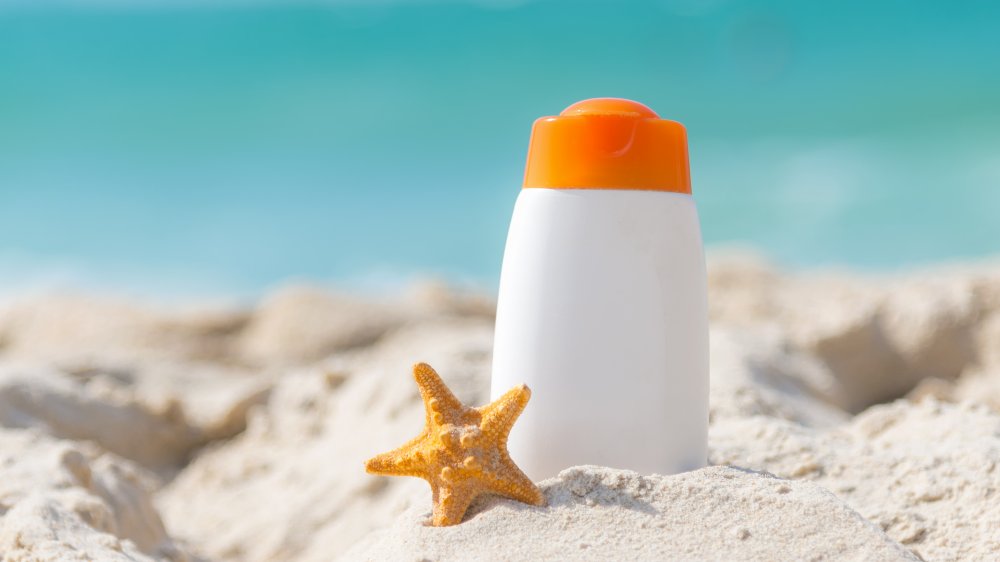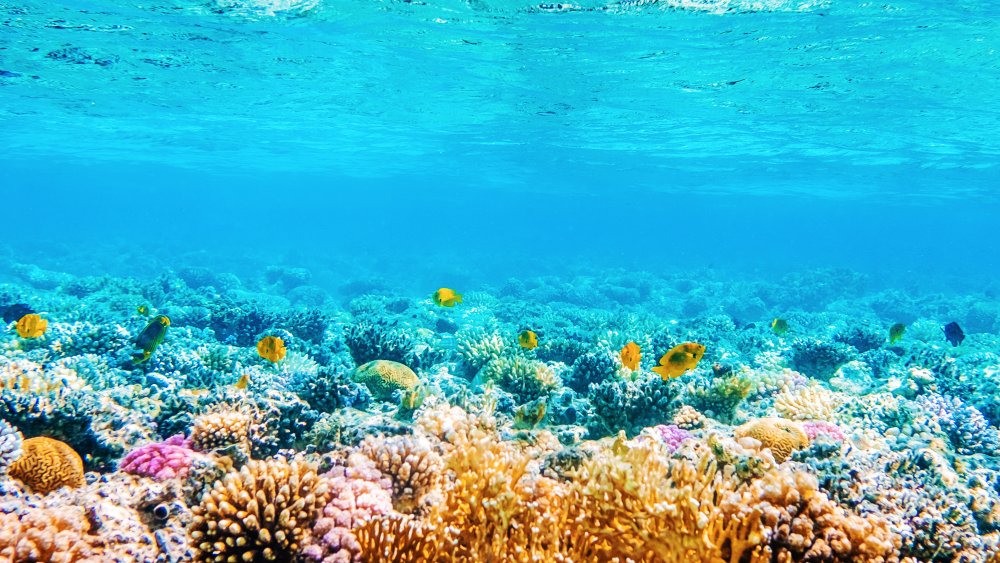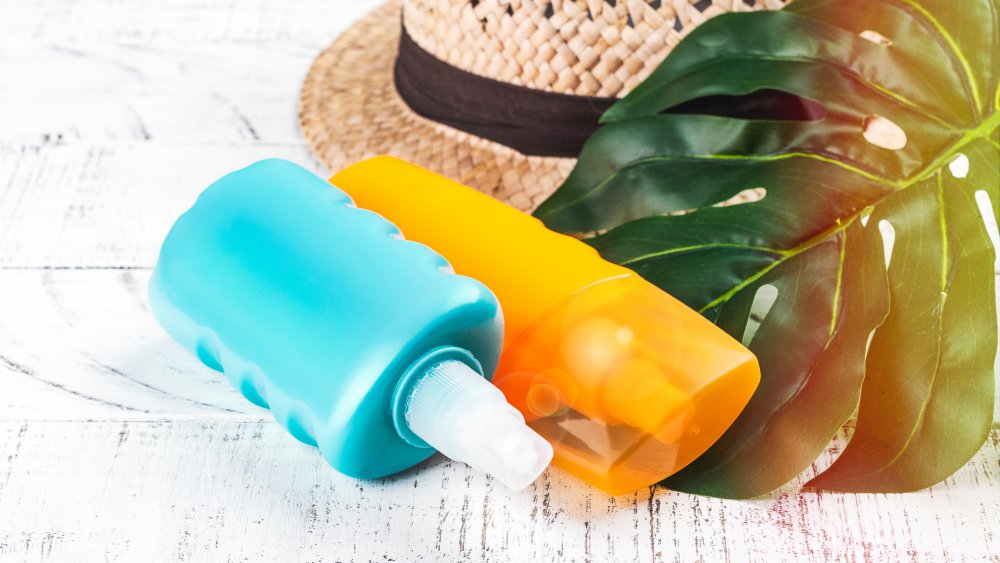The Truth About Reef-Safe Sunscreen
We've always been told that using sunscreen is the best way to protect ourselves from skin cancer. But what if we told you that by protecting ourselves, we are damaging the environment?
Until recently, the most widely used sun-blockers have contained oxybenzone and octinoxate, because these ingredients are proven effective at blocking the two forms of UV light — UVA and UVB (via the National Library of Medicine). But the trouble with both chemicals is that research shows they have a devastating impact on coral reefs. "Eighty-five percent of the Caribbean coral reefs died before 1999 or 2000. That wasn't global warming. It's pollution," environmental scientist Craig A. Downs tells Travel and Leisure. He added in just a few hours, oxybenzone from sunscreen can cause deformities and bleaching in coral reefs. These sunscreens, which are making their way into oceans and seas when you swim, or when you take a shower, have been banned in Hawaii and Key West. Florida.
We are now left to wonder what reef-safe alternatives we might be able to use for sunblocks.
Just because something says "reef-safe" doesn't mean it is
Most of us would be onboard with getting reef-safe sunscreens, but the reality is a bit more complicated than it looks. Downs tells Consumer Reports that just because oxybenzone and octinoxate are widely studied, and as a result, are on the top of the list of sunscreen culprits, there are other products which research shows may also bad for the environment too, because they can leach into underwater ecosystems. "Even if you have something relatively safe, having 5,000 people getting into the water at a single beach, the oils from most sunscreen products can induce toxicity," he says.
Unfortunately, New York dermatologist Joshua Zeichner tells Elle that, "There is no specific definition for a reef safe sunscreen. Most people consider products to be reef-safe if they do not contain the chemical UV blocking ingredients like octocrylene and octinoxate." But according to Zeichner, and Downs' organization, Haereticus Environmental Laboratory, you'd be playing it safe if you avoid sunblocks that also contain octocrylene, para-amniobenzoic acid (PABA), and parabens.
Sunscreens aren't our only defense against the sun
If you really want to protect our beaches against further damage, Brian Guadagno, the founder of a Hawaii-based reef-safe sunscreen company says to skip the spray cans of sunblock altogether. "[With an aerosol spray], the chemical ingredients are microscopic and [are] inhaled into the lungs, and dispersed airborne into the environment," Guadagno, who is now a member of The Safe Sunscreen Council, tells Travel and Leisure.
But if you really want to use a zero environmental impact, reef-safe sunblock, both Guadagno and Downs agree that using sun protective clothing with a UPF rating will go a long way in protecting the environment. "So you wear the UPF sun-shirt and then you apply sunscreen to your face, neck, the back of your hands, behind your ears. Think of how much less sunscreen you are using," Downs says. Mineral-based sunscreens, with non-nano titanium dioxide, also appear to be safer for reefs.


